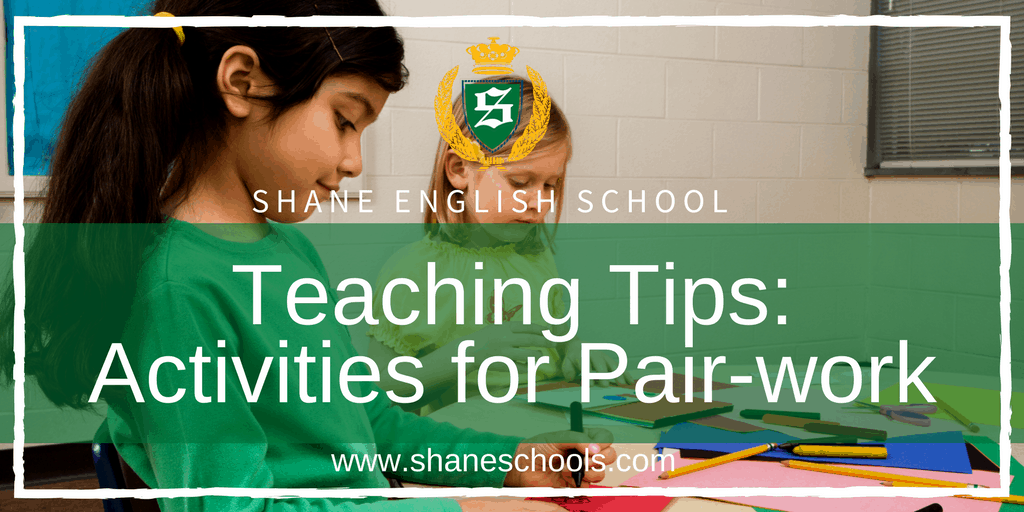Group activities are lots of fun, but for maximizing student talking time, you can’t go wrong with some pair-work in the classroom. Smaller groups (and pairs) give more students time to talk and keeps students engaged so that you can monitor more closely. Try out some of these activities for pair-work in your classroom.
Back Tracing
A good game for children, (but not for awkward teenagers or adults!) back tracing is a game for students to practice the spelling of a new lexical set. Write up the vocabulary on the board and put students into pairs. One student ‘writes’ a word one letter at a time, using their finger, onto the back of their partner. Their partner should try to guess each letter as their tracer spells it, and write them down to spell out the word.
And more games: 6 Favourite ESL Games and Activities to Use in Your Classroom
Noughts and Crosses Q & A (Tic Tac Toe Q & A)
A popular two player game, this can easily be turned into a TEFL activity by getting students to ask a target question each time they make a move. Either you can write up target questions on the board and, when each student wants to make a move, they pick out a question to ask their partner, or you can make your own Noughts and Crosses board and write the questions directly onto the squares. Another idea is to make a coloured board with each coloured box corresponding to a different question on the board – this way you can make sure the students ask a different question each turn and use the board for different topics later.
And here are a few more simple games: Keep It Simple: No-Prep Games and Activities
Interview
This activity works well for higher level students who can read and write well. Either supply the students with a list of questions – or get them to choose their own – and then the students interview each other and write down the answers. Questions can be on any topic – choose something that fits into your lesson plan and gives students a chance to practice the language they’ve already studied. Important Note: In this type of activity, sneaky students sometimes try to simply ‘switch papers’ and answer the questions on paper without opening their mouths. Monitor carefully to check that all pair groups are asking the questions verbally, or have the students sit back-to-back so it’s easy for you to see who’s doing the writing! For a follow-up, you can ask the students to present their interview findings to the class to check that they’ve been listening carefully!
Do you want more articles like this? Visit our Teaching Tips blog.
About the Author
Celia Jenkins is a veteran English teacher and freelance writer whose teaching adventure has taken her to Japan, China and more.

We're hiring!
With schools around the world, Shane English School always has exciting new opportunities to offer.


